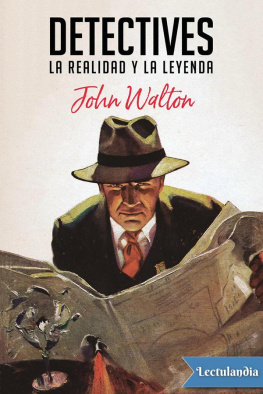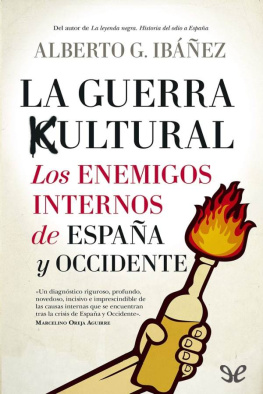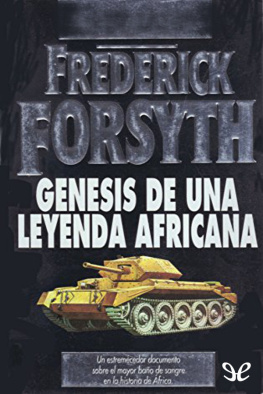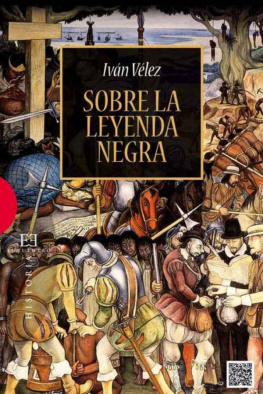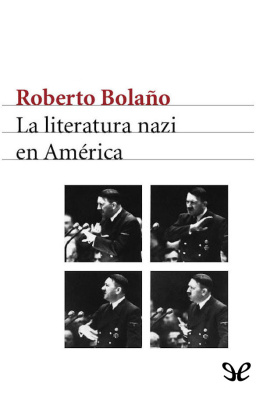AGRADECIMIENTOS
H e ido reuniendo el material para este libro a lo largo de un extenso período y a partir de una amplia gama de fuentes. Me siento agradecido hacia incontables bibliotecarios —aquellas personas, todavía vitales, que ayudan al escritor a ensamblar las pruebas que están allí, en algún sitio, si alguien nos echa un cable para hallarlas—. Mis agradecimientos a los archivistas y personal de la Biblioteca Bancroft, en la Universidad de California (Berkeley); de las Colecciones Especiales de UCLA (Universidad de California, Los Ángeles); de la Biblioteca Peter J. Shields de la Universidad de California (Davis); del Centro Harry Ransom de la Universidad de Texas (Austin); de las Colecciones Históricas y Especiales de la Biblioteca de la Facultad de Derecho de Harvard; del Centro de Investigación y Tareas de Archivo de la Biblioteca J. Paul Leonard, en la Universidad Estatal de San Francisco; de Colecciones Especiales y Archivos Universitarios de las Bibliotecas de la Universidad de Stanford; de la Biblioteca Newberry, en Chicago; de los Archivos Nacionales, en Washington D. C.; de los Archivos Estatales de California, en Sacramento; de la Biblioteca Estatal de California, en Sacramento; y de la Biblioteca Pública de San Francisco.
Fueron Frank y Joe Hardy quienes me hicieron comenzar con este proyecto. Más recientemente me he beneficiado de la obra publicada y de los comentarios editoriales de Robert Weiss y Erin Smith. Doug Mitchell, editor jefe de University of Chicago Press, me ha proporcionado un cálido apoyo y buen humor. Tim McGovern y Kyle Adam Wagner me han librado de tener que preocuparme por los permisos e ilustraciones. Levi T. Stahl, Jenni Fry y el personal de University of Chicago Press han contribuido muchísimo a la edición y promoción de la obra. No deja de impresionarme una y otra vez que los libros sean un esfuerzo colectivo. Cuando tenía mis dudas, Howard S. Becker, mi amigo, colega durante cincuenta años y compañero de afición por la literatura negra, me animó a escribir este libro, y luego revisó uno de los primeros borradores con ojo crítico. Howie se ha ganado muchos elogios, de los que sin duda el más apto es que es un profesor. Mi mujer, Priscilla, me ha dado mucho más de lo que le puedo devolver.
BIBLIOGRAFÍA
LIBROS Y ARTÍCULOS
ADAMS, GRAHAM, JR. , Age of Industrial Violence, 1910-1915, Nueva York, Columbia University Press, 1966.
ADORNO, THEODOR, The Culture Industry: Selected Essays on Mass Culture, Londres, Routledge, 2001. [Parte de este libro está editado en español: Adorno, Theodor, y Max Horkheimer, Industria cultural, Buenos Aires, El cuenco de plata, 2013.]
ANDERSON, JOHN LEE, «Private Eyes: A Crime Novelist Navigates Cuba’s Shifting Reality». The New Yorker, 21 de octubre de 2013, pp. 60-71.
AUERBACH, JEROLD S. , Labor and Liberty: The La Follette Committee and the New Deal, Indianápolis, Bobbs-Merrill, 1966.
BEAN, WALTON, Boss Ruef’s San Francisco: The Story of the Union Labor Party, Big Business, and the Graft Prosecution, Berkeley, University of California Press, 1952.
BEET, THOMAS, «Methods of American Private Detective Agencies», Appleton’s Magazine n.º 8 (julio-diciembre 1906), pp. 439-445.
BLANKENHORN, HEBER, Adventures in Propaganda, Letters from an Intelligence Officer in France, Boston, Houghton, 1919.
BLUM, HOWARD, American Lightning: Terror, Mystery, the Birth of Hollywood, and the Crime of the Century, Nueva York, Crown, 2008.
BOYER, PAUL, Urban Masses and Moral Order in America, 1820-1920 , Cambridge, Harvard University Press, 1978.
BURNS, WILLIAM J. , The Masked War, Nueva York, Doran, 1913. Reimpresión: Whitefish, Kessinger, 2010.
—, 1925a. «Hotel and Bank Crooks», Saturday Evening Post 197, n.º 49, 6 de junio de 1925, pp. 46-52.
—, 1925b. «The Trail of the Bank Swindler», Saturday Evening Post 197, n.º 50, 13 de junio de 1925, pp. 43-126.
CAESAR, GENE, Incredible Detective: The Biography of William J. Burns, Englewood Cliffs, Prentice-Hall, 1968.
CHANDLER, RAYMOND, The Simple Art of Murder, Nueva York, Vintage, 1934. [Hay trad. cast.: El simple arte de matar, Barcelona, DeBolsillo, 2014.]
CHEVALIER, LOUIS, Laboring Classes and Dangerous Classes in Paris during the First Half of the Nineteenth Century, Princeton, Princeton University Press, 1973.
COBB, RICHARD, The Police and the People: French Popular Protest, 1789-1820 , Oxford, Oxford University Press, 1983.
COLLINS, PAUL, «The Case of the First Mystery Novelist», The New York Times Sunday Book Review, 7 de enero de 2011.
CRAIGE, JOHN H. , «The Professional Strike-Breaker», Collier’s Weekly, 3 de diciembre de 1910, pp. 20-25.
CRAPSAY, EDWARD, «The Nether Side of New York», Galaxy 11, n.º 2, febrero de 1871, pp. 188-197.
CROWLEY, JACK, «Red Harvest and Dashiell Hammett’s Butte», Montana Professor 18, n.º 2 (primavera de 2008): http://mtprof.msun.edu/Spr2008/crowl.html (inglés).
DALY, CARROLL JOHN, The Snarl of the Beast, Nueva York, Harper Collins, 1927.
DAVIS, NATALIE ZEMON, Fiction in the Archives: Pardon Tales and Their Tellers in Sixteenth-Century France, Stanford, Stanford University Press, 1987.
DENNING, MICHAEL, Mechanic Accents: Dime Novels and Working-Class Culture in America, Londres, Verso (ed. rev.), 1998.
DINNERSTEIN, LEONARD, The Leo Frank Case, Nueva York, Columbia University Press, 1966.
DONNER, FRANK, Protectors of Privilege: Red Squads and Police Repression in Urban America, Berkeley, University of California Press, 1990.
DOWELL, ELDRIDGE F. , A History of Criminal Syndicalism Legislation in the United States, Nueva York, Da Capo, 1969.
EAGLETON, TERRY, Literary Theory: An Introduction, University of Minnesota Press, Mineápolis, 1983. [Hay trad. cast.: Una introducción a la teoría literaria, Ciudad de México, Fondo de Cultura Económica, 1998.]
EATON, MICHAEL, Chinatown, Londres, British Film Institute, 1997.
FLANDERS, JUDITH, The Invention of Murder: How the Victorians Revelled in Death and Detection and Created Modern Crime, Londres, Harper Press, 2011.
FRADKIN, PHILIP L. , The Great Earthquake and Firestorms of 1906: How San Francisco Nearly Destroyed Itself, Berkeley, University of California Press, 2005.
FRIEDMAN, MORRIS, The Pinkerton Labor Spy, Nueva York, Wilshire, 1907.
FROST, RICHARD H. , The Mooney Case, Stanford, Stanford University Press, 1968.
FURLONG, THOMAS, Fifty Years a Detective, San Luis, C. E. Barnett, 1912.
GALL, GILBERT J. , «Heber Blankenhorn, the La Follette Committee, and the Irony of Industrial Repression», Labor History 23, n.º 2 (primavera de 1982) pp. 246-253.
—, «Heber Blankenhorn: The Publicist as Reformer», Historian 45, n.º 4 (agosto de 1983), pp. 513-528.
GATLIN, DANA, «How Abe Ruef Confessed», McClure’s , febrero de 1911.
GENTRY, CURT, Frame-Up: The Incredible Case of Tom Mooney and Warren Billings, Nueva York, Norton, 1967.
GIBSON, WALTER B. , y Anthony Tollin, The Shadow Scrapbook, Nueva York, Harcourt Brace Jovanovich, 1979.
GOULART, RON, Cheap Thrills: An Informal History of the Pulp Magazine, Nueva York, Arlington House, 1972.
GREEN, JAMES, Death in Haymarket: A Story of Chicago, the First Labor Movement, and the Bombing That Divided America, Nueva York, Anchor, 2006.
GREGORY, JAMES N. , American Exodus: The Dust Bowl Migration and Okie Culture in California, Nueva York, Oxford University Press, 1989.
GT-99, Twenty Years a Labor Spy, Indianápolis, Bobbs-Merrill, 1937.
GUTMAN, HERBERT G. , Work, Culture, and Society in Industrializing America: Essays in American Working-Class History, Nueva York, Vintage, 1966.
HAILEY, KITTY, «Profile: Eddy McClain Statesman of the Investigative Profession», PI Magazine, julio/agosto de 2002, pp. 10-13.
HAMMETT, DASHIELL, «From the Memoirs of a Private Detective», Smart Set n.º 70 (marzo de 1923), pp. 87-90. Reimpreso en Hammett: Crime Stories and Other Writings, Steven Marcus (ed.), Nueva York, American Library, 2001, pp. 905-909.

